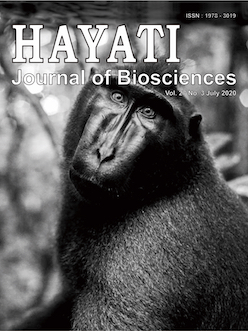Identification of Follower Status Based on Male Proximity Score in Crested Macaque
Abstract
Crested macaque live in multimale-multifemale social groups where temporary association (consortship) typically occurs. Current theory and these limited qualitative observations suggest the hypothesis that behavior functions as a means for males to gain access to fertile females. The aim of this study was to investigate follower status based on quantitative method. Males were classified as either “consort males,” “followers,” and “non-followers” based on proximity maintanance every 15 minute uses scan sampling. Tactics used by followers were classified into 1) individual challenge, 2) coalitionary challenge, 3) abandoned takeover, and 4) opportunistic takeover. The proportion of successful takeovers by followers was calculated by dividing the number of takeovers by followers by the total number of observed takeovers. The proportion of followers is higher than average on D-5 and earlier, D-4, and D-3. Only two of the four consort takeover tactics were used by followers. For abandoned which made up 40% and for individual tactic was made up to 11.5% of consort takeovers tactic used. This study contribute to our understanding of alternative mating strategy in primate and provide the first quantitative data demonstrating that following is an alternative mating strategy in crested macaque (Macaca nigra).
Downloads
HAYATI J Biosci is an open access journal and the article's license is CC-BY-NC. This license lets others distribute, remix, tweak, and build upon author's work, as long as they credit the original creation. Authors retain copyright and grant the journal/publisher non exclusive publishing rights with the work simultaneously licensed under a https://creativecommons.org/


















.png) IPB University
IPB University Department of Biology
Department of Biology The Indonesian Biological Society
The Indonesian Biological Society 

